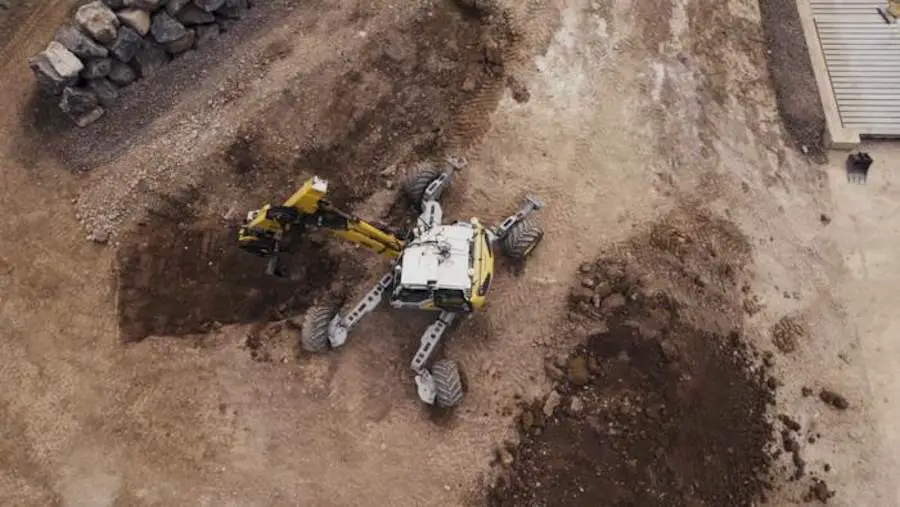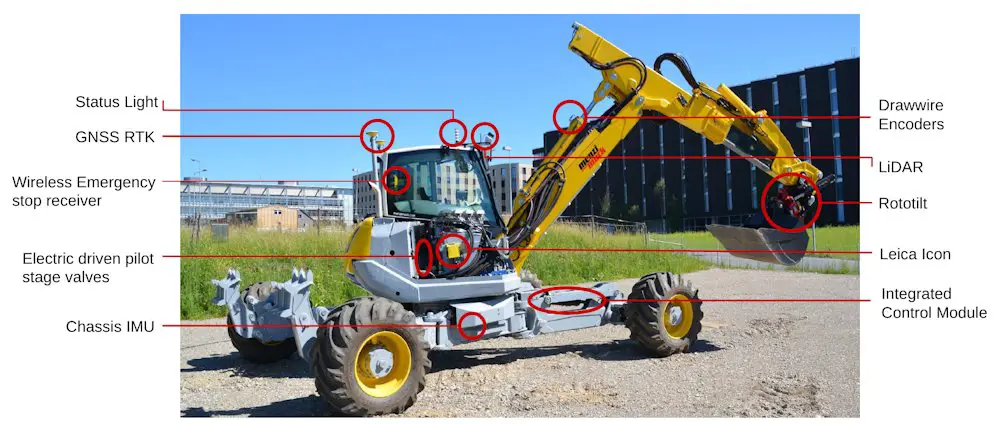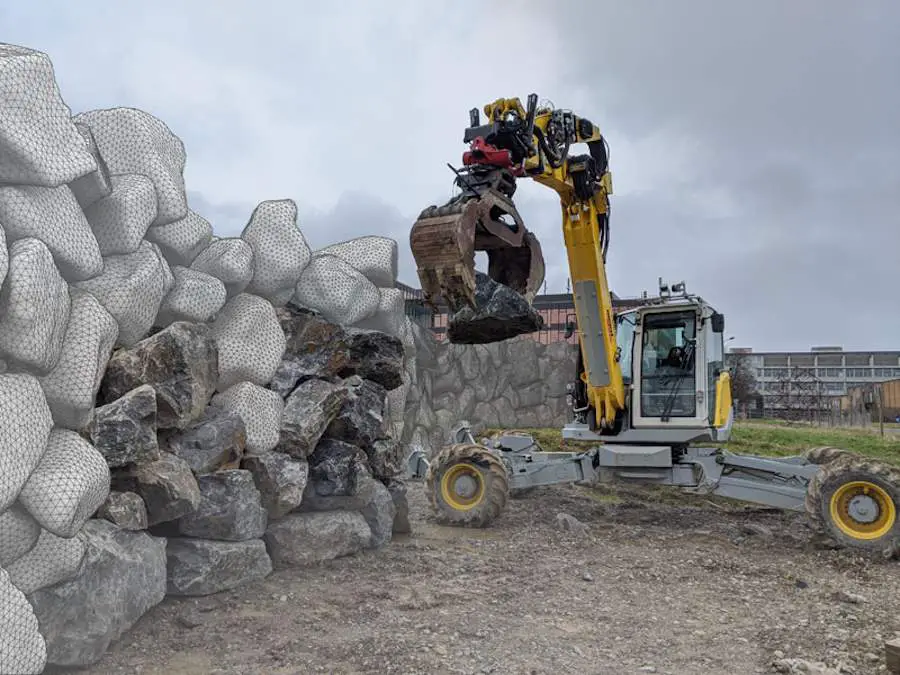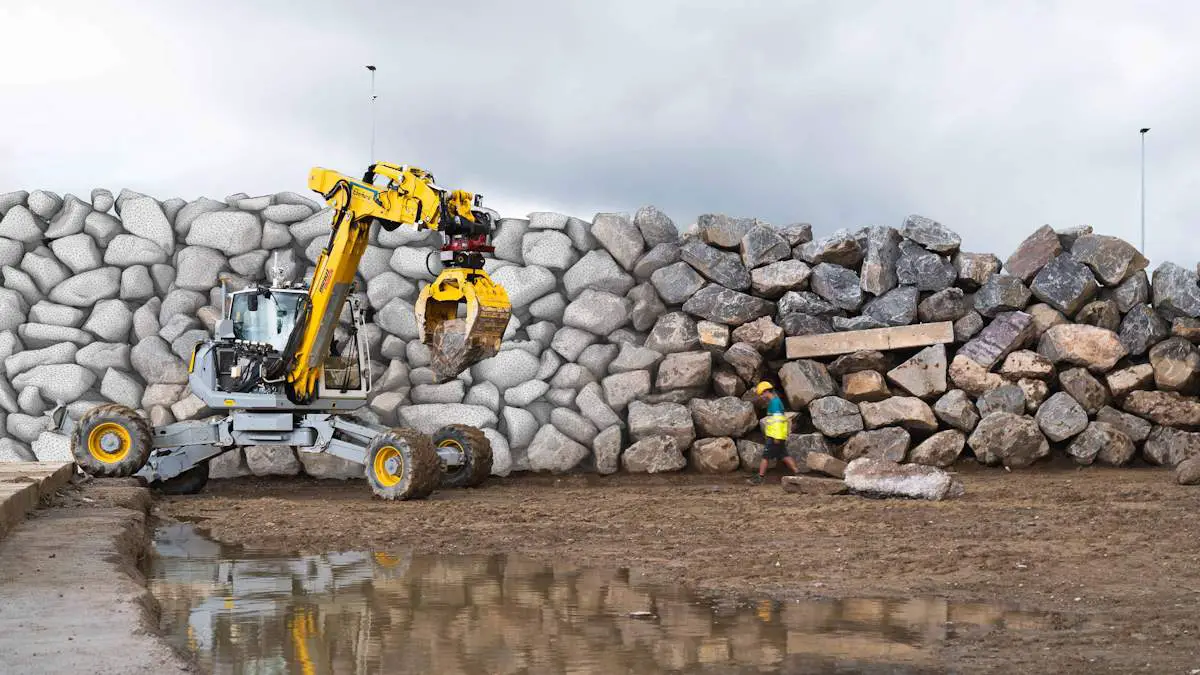In an impressive display of robotic engineering, researchers at ETH Zurich have developed an autonomous excavator capable of building dry stone walls from multi-ton blocks and demolition rubble. This achievement represents an important milestone in the field of automated construction.
The ETH Zurich research team deployed an autonomous excavator, the so-called HEAP, to build a dry stone wall six meters high and sixty-five meters long. The wall is integrated into a digitally planned and autonomously excavated landscape and park.
The group of researchers included Gramazio Kohler Research, the Robotics Systems Lab, the Vision for Robotics Lab, and the Chair of Landscape Architecture. This innovative design application was developed by the National Center for Research Competence in Digital Manufacturing (NCCR dfab).
Construction technology and procedure
Using sensors, the excavator can autonomously map the construction site in 3D and locate existing building blocks and stones for the construction of the wall. Specially designed tools and machine vision approaches allow the excavator to scan and grasp large rocks in its immediate surroundings. It can also record their approximate weight and center of gravity.
The algorithm determines the best position for each stone and the excavator then performs the task itself and places the stones in the desired location. The autonomous machine can place 20 to 30 stones in one delivery – about as much as one delivery could deliver.
Towards a more sustainable and adaptive construction
This research focuses on the autonomous on-site planning and construction of large dry stone structures (walls built of irregular stones, without mortar). The project develops an adaptive planning and production chain that guides construction towards digitally defined global geometries while enabling the use of locally available and extremely diverse rocks and recycled demolition materials that have a very low embodied energy content.
The process offers a fully reversible alternative to concrete that can be used, for example, in the construction of retaining walls, load-bearing structures and facings of civil infrastructure and landscaping.




Hydraulic excavator for autonomous use
HEAP (Hydraulic Excavator for Autonomous Purposes) is a custom Menzi Muck M545, developed for autonomous use cases as well as advanced teleoperation.
The machine is equipped with new hydraulic cylinders with adjustable force in the chassis, which allow it to adapt to any terrain (see KTI project).

In addition, HEAP is equipped with sensors necessary for autonomous operation, namely LIDAR, IMU, GNSS and joint sensors. The main autonomous use case is robotic landscaping and autonomous excavation studied in the dfab project.
Synthetic
This research from ETH Zurich represents a major advance in the field of automated construction. Autonomous excavator HEAPcapable of building dry stone walls from multi-ton blocks and demolition debris, paving the way for new, more sustainable and environmentally friendly construction methods.



For better understanding
What is HEAP Autonomous Excavator?
HEAP is an autonomous excavator developed by researchers at ETH Zurich. It is able to build dry stone walls from blocks weighing several tons and demolition rubble.
HEAP uses sensors to autonomously map the construction site in 3D and locate existing building blocks and stones. It uses an algorithm to determine the best position for each stone and then performs the task itself.
What is the aim of this research?
The aim of this research is to develop an autonomous and sustainable construction method using locally available materials with low energy consumption.
What are the advantages of this construction method?
This method of construction offers a fully reversible alternative to concrete that can be applied to the construction of retaining walls, load-bearing structures and coverings of civil infrastructure and landscaping.
What is the role of ETH Zurich in this project?
ETH Zurich played a key role in the development of this technology with the participation of several of its research laboratories, including Gramazio Kohler Research, Robotics Systems Lab, Vision for Robotics Lab and the Chair of Landscape Architecture.
The main lesson
| Learning |
|---|
| The HEAP autonomous excavator was developed by researchers from ETH Zurich. |
| HEAP is capable of building dry stone walls from multi-ton blocks and demolition rubble. |
| HEAP uses sensors to autonomously map the construction site in 3D and locate existing building blocks and stones. |
| The algorithm determines the best position for each stone and HEAP then performs the task itself. |
| This construction method offers a fully reversible alternative to concrete. |
| It can be applied to the construction of retaining walls, load-bearing structures and facings of civil infrastructure and landscaping. |
| Several ETH Zurich research labs participated in this project, including Gramazio Kohler Research, the Robotics Systems Lab, the Vision for Robotics Lab and the Chair of Landscape Architecture. |
| Research focuses on autonomous on-site planning and construction of large dry stone structures. |
| HEAP can place 20-30 stones in one delivery. |
| The project develops an adaptive planning and production chain that guides construction towards digitally defined global geometries. |
Reference
Main Illustration Caption: An excavator picks up and scans each rock block to place it in the correct position. Circularity park in Oberglatt, Eberhard AG. Photo: ETH Zurich / Marc Schneider
Johns RL, Wermelinger M, Mascaro R, Jud D, Hurkxkens I, Vasey L, Chli M, Gramazio F, Kohler M, Hutter M: A framework for robotic excavation and dry stone construction using in-situ materials, Scientific robotics22 Nov 2023, DOI: 10.1126/scirobotics.abp9758call_made
(writing)

